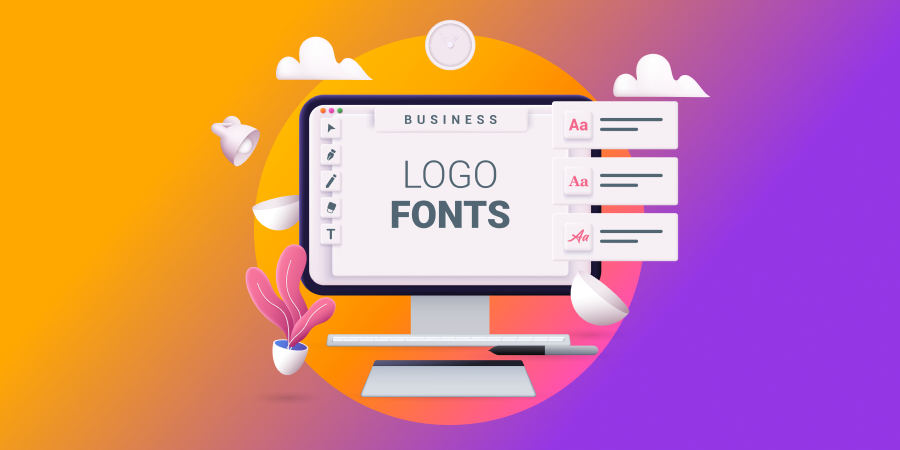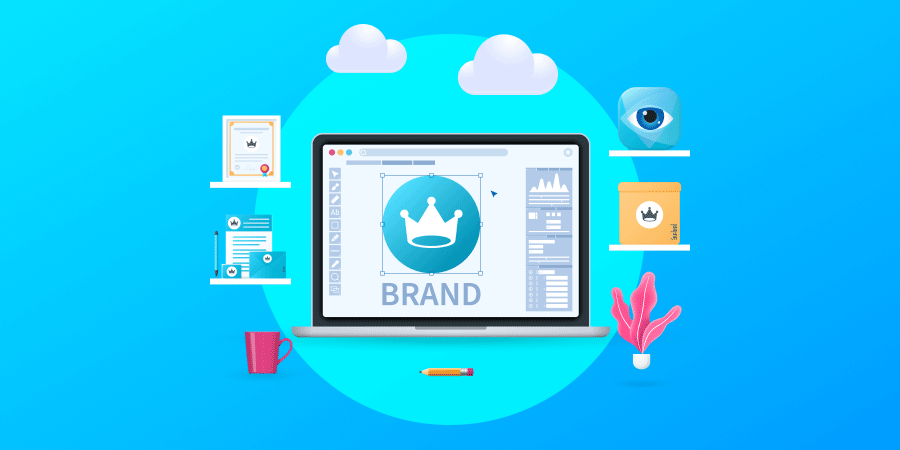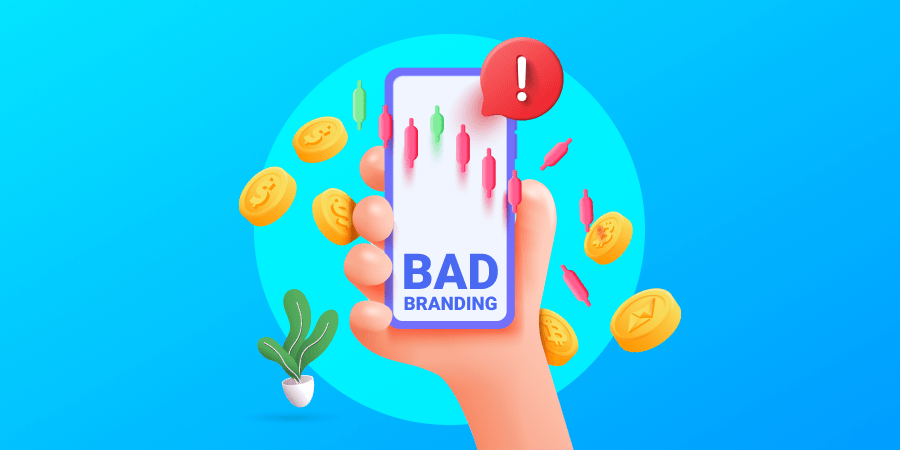36% of consumers report that a logo helps them remember a brand.
Believe it or not, logo font selection is a critical element in shaping your brand’s image and it directly influences customer engagement and loyalty.
In this guide, we’ll explore some of the best logo fonts from brands across industries and explain how to choose the best font for your business logo — to create a memorable trademark that connects with your target market.
[ez-toc]
Digital Silk offers custom branding services. Request A Quote
4 Main Logo Font Types
The font you choose for your business logo plays a role in conveying the personality, values and philosophy of your brand.
In fact, it can significantly impact consumer perception and behavior, which is why making the choice is no easy feat.
While the world of typography offers a vast array of font styles, logo fonts can be broadly categorized into four main types: serif, sans serif, script and decorative fonts. Let’s dive into each in more detail.
1. Serif Fonts
Serif fonts are characterized by small decorative lines or strokes (serifs) at the ends of each letter. These fonts exude a sense of tradition, elegance and reliability.
They are often associated with established and prestigious brands, like Rolex, BMW and The New York Times.
Serif logo fonts are common for businesses in the law and finance industries where trust and credibility are paramount.
Classic examples of serif fonts include Baskerville, Times New Roman and Georgia.
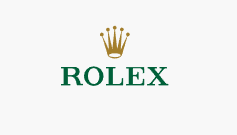
[Source: Rolex]
2. Sans Serif Fonts
An overwhelming majority of the 500 biggest companies in the world use sans serif fonts, making this font the most popular option for business logo fonts.
As implied by the name (“sans” meaning “without” in French), sans serif fonts lack the decorative strokes at the ends of letters — a trait of serif fonts.
Instead, sans serif fonts have a clean, modern and minimalistic appearance, making them ideal for brands that want to project a contemporary and approachable image.
Sans serif fonts are commonly used by tech companies, startups and fashion brands — including Facebook, Google and Vogue.
The simplicity and straightforward design make them easily readable in both digital and print media. Some popular sans-serif fonts are Arial, Helvetica and Futura.

[Source: Facebook]
3. Script Fonts
Script fonts mimic handwriting with flowing and cursive-like letterforms. These fonts are perfect for adding a touch of elegance and personalization to your brand.
They evoke a sense of creativity and sophistication, making them ideal for businesses in the luxury, fashion and beauty industries, including Cartier, Christian Louboutin and Chopard.
It’s important to note that script fonts can be difficult to read in small sizes and may not work well for body text.
Some examples of script fonts are Brush Script, Great Vibes and Pacifico.
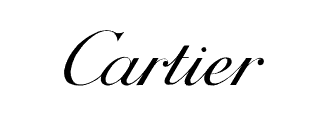
[Source: Cartier]
4. Decorative Fonts
Decorative fonts, also known as display fonts, are highly stylized and eye-catching.
They often have unique and intricate designs that set them apart and are perfect for brands that want to showcase their creativity and personality, like Disney, Harry Potter and Harley Davidson.
Keep in mind that while decorative fonts can be attention-grabbing, they may not be the best choice for conveying a professional and serious tone, which some industries might require.
Examples of decorative fonts include Broadway, Jokerman and Comic Sans.
15 Best Fonts For A Business Logo
While there are over xyz fonts you could choose for your business logo, there are a handful that stand out among the rest for their readability, timelessness and other key characteristics.
Explore our carefully curated list of the 15 best logo fonts for a business below.
1. Helvetica
Helvetica is a versatile and widely recognized sans serif font that has stood the test of time. It was originally created in 1957 and has since become one of the most popular logo fonts in the world.
Known for its clean and modern appearance, Helvetica is a favorite among designers and businesses alike.

This font is highly readable due to its simplicity, which makes it a practical choice for logos that need to be easily recognizable across various marketing materials.
Its straightforward and neutral design allows it to adapt to different brand personalities, making it suitable for both corporate and creative ventures.
2. Futura
Futura is a geometric sans-serif font that embodies a futuristic and forward-thinking spirit.
With its clean lines and bold shapes, Futura is a great choice for modern brands, tech startups and companies aiming to convey a sense of innovation and progress.
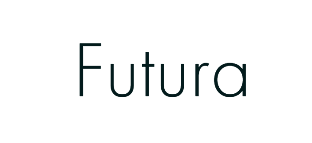
A simple and sleek design allows Futura to work well in various sizes, making it suitable for both logos and body text.
It conveys a sense of professionalism and can be applied in a wide range of industries, from technology to fashion.
3. Garamond
Garamond is an elegant and timeless serif font, named after the renowned 16th-century French engraver Claude Garamond.
Its old-style charm and delicate letterforms make it a popular choice for brands that want to convey a sense of sophistication and refinement.

Garamond’s extensive font family encompasses a range of styles and weights, from regular and italic to bold and semi-bold, providing a plethora of design possibilities for various applications.
4. Baltica
Baltica is a modern and elegant serif font with a distinct personality. It features slightly rounded serifs, giving it a unique and contemporary twist while still exuding a sense of tradition and sophistication.
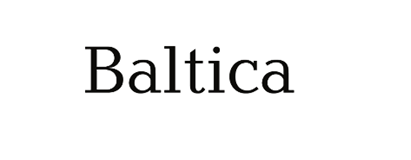
Baltica’s clean and balanced letterforms make it an excellent choice for businesses seeking to establish a modern yet refined brand image.
Its well-proportioned letterforms and ample spacing between characters contribute to optimal legibility.
5. Bodoni
Bodoni is a high-contrast serif font with sharp, distinct lines and contrasting thick and thin strokes.
It exudes elegance and sophistication, making it a popular choice for luxury brands, high-end fashion houses and creative industries.
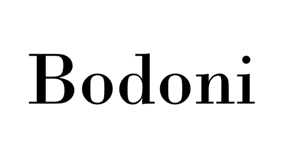
The dramatic and timeless appearance of Bodoni adds a touch of glamour and refinement to any logo design.
Its association with the 18th-century Italian typographer Giambattista Bodoni adds a layer of heritage and craftsmanship to its allure
6. Lato
Lato is a versatile and modern sans-serif font with a friendly and approachable appearance.
Its balanced and legible letterforms make it suitable for a wide range of design applications, from websites and mobile apps to print materials and branding.
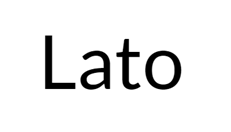
Designed by Łukasz Dziedzic, Lato has gained popularity for its clean and open letter shapes that ensure clarity and readability across various platforms and devices.
It is a popular choice for businesses that want to create a professional yet friendly and approachable image.
7. Pacifico
Pacifico is a fun and quirky script font that mimics casual handwriting.
Its playful and lighthearted appearance makes it perfect for creative and artsy businesses, as well as brands targeting a youthful and trendy audience.
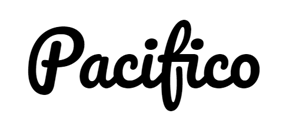
By leveraging its distinct personality and charming style, Pacifico can add a touch of whimsy to your brand identity.
Whether used in logos, headlines, or promotional materials, this font instantly exudes a sense of approachability and friendliness.
8. Baskerville
Baskerville is a classic and elegant serif font with a rich history dating back to the 18th century.
It is known for its refined letterforms and easy readability, making it a popular choice for businesses that want to convey a sense of tradition and sophistication.

Baskerville’s versatility allows it to work well in both logos and body text, making it a practical choice for creating a consistent and cohesive brand identity.
9. Montserrat
Montserrat is a clean and modern sans-serif font designed by Argentine graphic designer Julieta Ulanovsky.
It was inspired by posters, signs and painted windows seen in Buenos Aires’ old Montserrat quarter in the first half of the 20th century.

Montserrat’s versatility and readability allow it to work well in various sizes, making it effective for both logos and body text.
Its simple and stylish appearance makes it a popular choice for startups, tech companies and design-oriented businesses.
10. Trajan
Trajan is an elegant and sophisticated serif font created by Carol Twombly and inspired by the letterforms of ancient Roman inscriptions.
Its association with Roman antiquity and the timeless legacy of great civilizations appeals to consumers who appreciate tradition, quality and attention to detail.
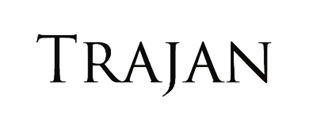
Trajan’s classic and timeless appearance makes it a popular choice for luxury brands, high-end restaurants and businesses that want to convey a sense of history, prestige or power.
11. Quattrocento
Quattrocento is a classic and elegant serif font that draws inspiration from the letterforms used during the Italian Renaissance.
Its name, “Quattrocento,” refers to the 15th century, which is considered the height of the Renaissance period.

The font’s graceful curves and delicate serifs exude a sense of artistic refinement and sophistication. Quattrocento is an excellent choice for businesses that want to convey a timeless and cultured image.
It works particularly well for brands in the art, luxury and creative industries.
12. Frutiger
Frutiger is a versatile and modern sans serif font designed by Adrian Frutiger. It is highly legible and versatile, making it a practical choice for a wide range of design applications.
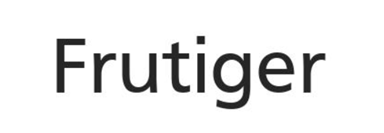
Frutiger’s neutral and unassuming personality also allows it to work harmoniously with other typefaces, enabling designers to create cohesive and well-balanced typographic compositions.
The font family also encompasses various weights, widths and styles.
13. Didot
Didot is an elegant and high-contrast serif font named after the Didot family, a group of prominent French printers, publishers and typefounders.
Didot is characterized by its thin, delicate serifs, tall letterforms and strong vertical stress.
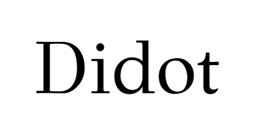
This timeless font exudes a sense of refinement, luxury and sophistication, making it a popular choice for high-end fashion brands, luxury products and prestigious establishments.
14. Proxima Nova
Proxima Nova is a modern and versatile sans serif font designed by Mark Simonson. It was released in 2005 and has quickly gained popularity for its clean and elegant appearance.

This font has become a favorite among designers and businesses alike due to its extensive character set, various font weights and excellent legibility across different sizes and devices.
Proxima Nova strikes a balance between contemporary and approachable, making it an ideal choice for modern brands and startups.
15. Lobster
Lobster is a decorative font designed by Pablo Impallari, known for its playful and casual nature. This makes it an excellent choice for brands that want to convey a sense of creativity, fun and uniqueness.
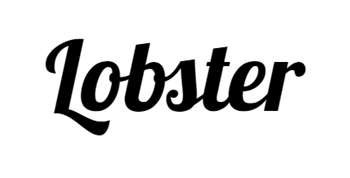
The flowing and cursive-like letterforms of Lobster give it an organic and authentic feel as if each letter were handwritten.
It’s used by many businesses in the creative and artistic fields to communicate a sense of handmade craftsmanship, a personal touch and a creative flair.
While Lobster can be an attention-grabbing and exciting logo font choice, it may not be the best fit for brands aiming for a formal or serious tone.
Consult our branding experts! Schedule A Consultation
Most Recognizable Business Logo Fonts
The world of typography offers a plethora of logo font options, but if you find the right fit, your logo could become iconic and synonymous with your brand, like the famous examples below.
Let’s explore some of the most recognizable logo fonts:
1. Coca-Cola
Beverage brand Coca-Cola uses a custom-designed script logo font known as “Spencerian Script.”
This elegant and flowing font has become inseparable from the brand’s identity, representing the timeless and classic appeal of Coca-Cola.

2. Google
Technology company Google uses a custom-designed logo font called “Product Sans.” It is a clean and modern sans-serif font that aligns with Google’s emphasis on simplicity and user-friendliness.

3. Airbnb
Hospitality and travel brand Airbnb uses a custom logo font called “Circular.” This rounded and friendly font complements the brand’s inclusive, approachable and community-driven image.
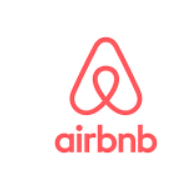
4. Netflix
Streaming service Netflix uses a custom typeface called “Netflix Sans.” This logo font was designed by Netflix’s in-house design team in collaboration with the font foundry Dalton Maag.

5. Adidas
Sports brand Adidas uses a custom logo font called “Adihaus.” This clean and modern font complements the simplicity and elegance of the “three-stripe” logo, enhancing the overall brand identity.
The font’s legibility makes it suitable for various applications, from branding to product labeling.
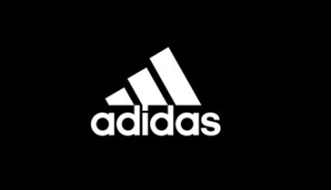
6. YouTube
Video-sharing platform YouTube uses the “TradeGothic LT Bold Condensed” logo font. The font’s bold and condensed design showcases the platform’s commitment to simplicity and clarity.

7. IMB
Technology and IT services company IBM uses a custom logo font called “IBM Plex.” This versatile sans serif font reflects the brand’s focus on technology and innovation.
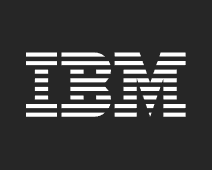
How To Choose A Font For Your Business Logo
Choosing the best logo font for your business involves careful consideration of your brand’s personality, target audience and industry.
Beyond being a typographic element, a font holds the potential to be a powerful tool for communicating your brand’s identity and values.
To choose the best font for your business logo:
1. Seek Inspiration From Successful Brands
Analyze logos of successful brands in your industry. While you should not copy their logo fonts, you can draw inspiration from their design choices.
Understanding how the most recognized brands use typography to reinforce their brand identity can guide you in making informed decisions for your own logo font.
2. Match The Logo Font With Your Brand’s Personality
Your brand’s personality is a critical aspect of its identity. When choosing a font for your business logo, consider whether it aligns with your brand’s personality traits, values and overall image.
A logo font that complements your brand’s essence can reinforce its message and create a strong visual connection with your target audience.
For example, if you’re creating a logo for a corporate brand and looking to convey trust and expertise, you might opt for a clean and elegant serif font.
Serif fonts exude professionalism and tradition, making them ideal for industries such as finance and law.
On the other hand, if your brand is modern and innovative, a sans-serif font might be a better fit.
Sans-serif fonts convey a sense of innovation and simplicity, making them popular among tech startups and creative businesses.
3. Consider Your Target Audience
Choosing a logo font that resonates with your audience can establish a sense of familiarity and help strengthen the consumer bond with your brand.
Conduct thorough research on your target demographic, considering your audience’s preferences, age group, cultural background and industry-specific expectations that might influence their perception of different fonts.
4. Ensure Legibility
Legibility is paramount in logo design. Ensure that the logo font you choose is clear and easy to read, even at smaller sizes or from a distance.
A font that hinders legibility may result in confusion and failure to convey your brand’s message effectively.
5. Test Scalability
Your logo will appear across various mediums and sizes, from business cards to billboards. Ensure that the font remains visually appealing and recognizable when scaled up or down.
A logo font that maintains its impact at different sizes ensures consistency across all marketing materials.
6. Consider International Appeal
If your business operates in international markets, take into account the logo font’s ability to include specific international letters or characters.
Ensuring that your font is suitable for international audiences will strengthen your brand’s presence and recognition across borders.
7. Opt For Timelessness
A successful logo stands the test of time. Avoid using trendy fonts that may quickly become outdated.
Opt for a logo font with a timeless quality, one that remains relevant and impactful for years to come, saving your brand from frequent rebranding efforts down the road.
8. Check Licensing Rights
If you are using a font from a font library or purchasing a custom font, ensure that you have the appropriate licensing rights to use it for commercial purposes.
Violating font licensing agreements can lead to legal issues down the line.
Find The Best Font For Your Business Logo With Digital Silk
Your business logo serves as the face of your brand, making a lasting impression on consumers and setting the tone for your entire business identity.
One crucial aspect of creating a remarkable logo is choosing the right font—a choice that holds the power to significantly influence your brand’s visual appeal and recognition.
In the top examples we shared, one trait that many of the most recognized logos share is custom design.
At Digital Silk, we understand the importance of crafting a logo that truly represents your business.
We offer custom logo design and branding services that cater to both initial logo creation for new brands, as well as logo redesign for established businesses wanting a fresh look.
Our team of award-winning designers is equipped with the expertise to guide you through the font selection process, ensuring your logo truly reflects your brand’s identity and connects with your target audience.
Digital Silk, however, is not just a logo design agency—we are a full-service web design agency offering a wide range of services to elevate your brand’s online presence.
From web design and development to digital marketing and content creation, we have all the tools you need to make a strong impact in the digital landscape.
Get a quote for your project. Request A Quote
FAQs About Logo Fonts
Still have questions about choosing a logo font (or fonts) for your brand? Find answers below.
1. Can different fonts work together in your business logo?
Using different fonts together in your business logo can be a powerful design choice. You can use a combination of fonts to create a well-balanced and harmonious design.
Pairing fonts from different categories can enhance visual interest and ensure that different elements of your brand’s message are appropriately conveyed.
For example, combining a bold sans serif font for the brand name with a sleek serif font for the tagline can create a visually appealing and cohesive logo.
When combining fonts, make sure they complement each other and don’t clash or distract from the overall message you want to convey.
Here are some considerations for making different fonts work together in your logo:
- Harmony: Ensure that the selected fonts harmonize well with each other. Aim for a cohesive and unified look, even if the fonts belong to different categories. The combination should feel intentional and purposeful, rather than random.
- Contrast: Strive for a balance of contrast between the fonts. Pairing a bold font with a more delicate one or a script font with a clean sans serif font can create a visually interesting and dynamic logo.
- Hierarchy: Use different fonts to establish a hierarchy in your logo design. The main brand name can be displayed in a distinct font that captures attention, while additional text or taglines can use a more subdued font to provide supporting information.
- Readability: While experimenting with font combinations, remember that readability should not be compromised. Make sure that the fonts are clear and easy to read, even at smaller sizes.
- Simplicity: Avoid using too many fonts in one logo, as it can lead to a cluttered and confusing design. Stick to one or two complementary fonts to maintain a clean and professional appearance.
2. What are the different capitalization styles commonly used in logos?
The capitalization styles commonly employed in logos include:
- All caps: This style uses uppercase letters for the entire text, conveying a sense of strength and boldness.
- Title case: In this style, the first letter of each major word is capitalized, while the rest are in lowercase. It offers a balanced and professional appearance.
- All lowercase: This style uses lowercase letters for the entire text, typically reflecting a more informal and approachable brand identity.
- Random combinations: Some logos use a mix of uppercase and lowercase letters in varying patterns to create a unique and visually engaging look.
3. How many fonts should a logo have?
Ideally, a logo should use a maximum of two fonts.
Using too many fonts can make the logo appear cluttered and less cohesive.
By limiting the number of fonts, you can maintain a clean and visually appealing design that effectively communicates your brand’s identity and message.
4. What font looks the most professional?
The most popular and professional logo font style among the top 250 largest global public companies is Sans Serif. About 179 out of 250 companies use this style in their logo branding.
It’s also interesting to know that the capitalization of letters is twice as common as using all lowercase lettering.
However, exceptions include well-known brands like Facebook, Amazon and Intel, which opted for lowercase logos for simplicity.
5. What mistakes do business owners make when choosing a logo font?
Some of the common mistakes business owners make when choosing logo font include:
- Opting for trendy fonts: Opting for fonts solely based on current design trends can lead to a logo that quickly becomes outdated. Trends change over time, and a trendy font might not stand the test of time, making your logo appear irrelevant.
- Choosing inappropriate logo fonts: Choosing a font that doesn’t align with the nature of your business or industry can send the wrong message to your audience. For instance, using a playful font for a law firm or a serious font for a children’s brand can create confusion.
- Using overly complex logo fonts: Fonts with intricate details or too many decorative elements can make your logo difficult to read, especially at smaller sizes. This can lead to poor brand recognition and a lack of visual impact.
- Ignoring scalability: If the logo font you choose isn’t scalable, it can lead to legibility issues. A font that looks good on a large computer screen may become unclear when scaled down on a business card or a product package.
- Implementing inconsistent fonts: Using too many fonts in a single logo or across different brand materials can create inconsistency and a lack of visual cohesion.
- Neglecting readability aspect: Some fonts, particularly script or overly stylized ones, can be difficult to read.
"*" indicates required fields

